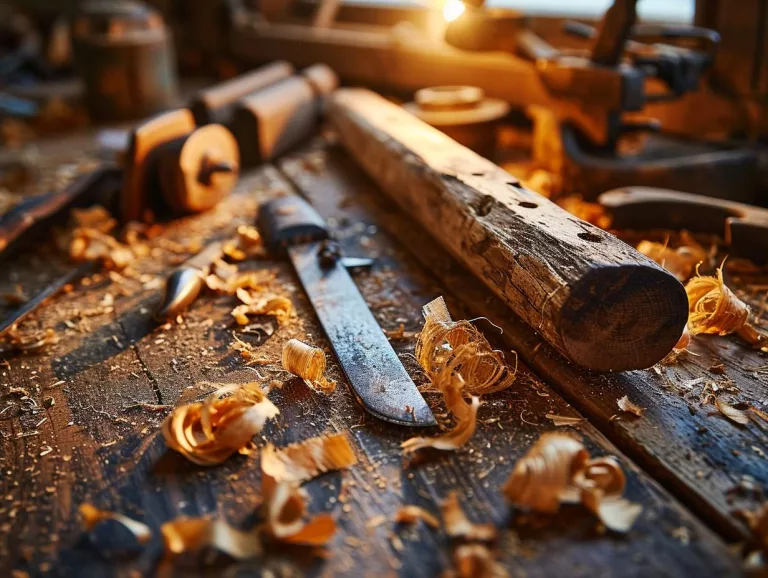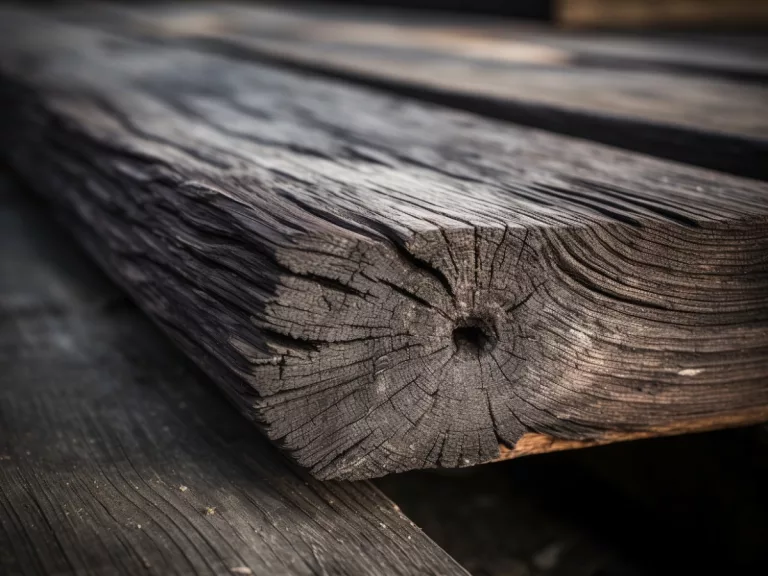Red Oak vs White Oak Furniture: Understanding the Amazing Differences
Choosing the right wood for furniture is more than just a matter of aesthetics; it’s about durability, sustainability, and the ambiance you want to create in your space. Among the plethora of wood types available, red oak and white oak stand out as popular choices. But what are the particular aspects of red oak vs white oak furniture? This article goes deep into the nuances of these two types of oak, guiding you to make an informed decision for your furniture needs.

Historical Context and Popularity
Oak has been a prime choice in furniture making for centuries. Its robust nature, combined with its elegant grain patterns, has made it a favorite among craftsmen and homeowners alike.
Red Oak
- It is native to North America and gained popularity in furniture making in the early 18th century.
- Its distinctive reddish hue and open grain pattern made it a favorite for colonial-style furniture.
- Over time, this species has been incorporated into modern furniture designs.
- It is valued for its combination of durability and aesthetic appeal.

White Oak
- It has a historical connection with maritime use, favored for its water-resistant properties.
- It was a preferred material for shipbuilding in ancient Europe due to its durability.
- The wood’s popularity in furniture making rose significantly in the late 19th century.
- The Arts and Crafts movement particularly celebrated white oak for its aesthetic qualities.
- Its subtle tan and brown shades, along with its tight grain, make it ideal for crafting classic, enduring furniture.

In different eras, both red and white oak have seen surges in popularity, influenced by design trends, availability, and evolving crafting techniques. Today, they remain at the forefront of quality furniture making, each bringing its unique charm and characteristics to the table.
Red Oak vs White Oak Furniture: Visual and Aesthetic Issues
When it comes to furniture, the visual appeal of the wood plays a pivotal role. Red oak and white oak, while both being oaks, offer distinct visual characteristics that cater to different aesthetic preferences.
Color Variations
Red Oak: Known for its warm undertones, it ranges from light brown to a rich reddish-brown hue. These warm tones can bring a cozy ambiance to spaces, making it a favorite for living rooms and bedrooms.

White Oak: Contrary to its name, it isn’t purely white. It boasts a spectrum of colors from pale yellow-brown to a deeper, almost amber hue. This versatility allows it to seamlessly fit into both contemporary and traditional settings.
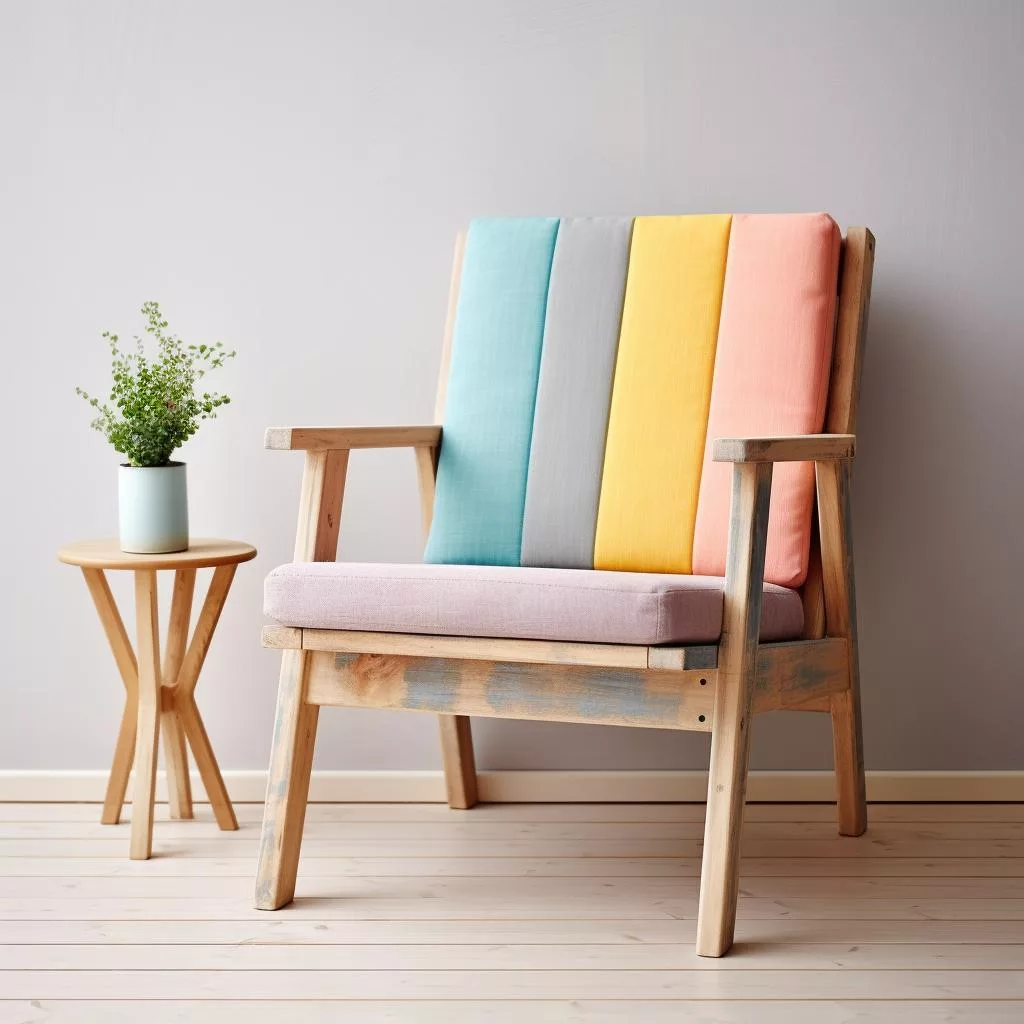
Grain Patterns
Red Oak: The grain is open and porous, with patterns that are often straight but can be wavy. This gives furniture a textured look, adding depth and character to pieces.
White Oak: Its grain is tighter and more uniform. The straight lines with occasional swirls give it a refined appearance, making it a top choice for minimalist or upscale designs.
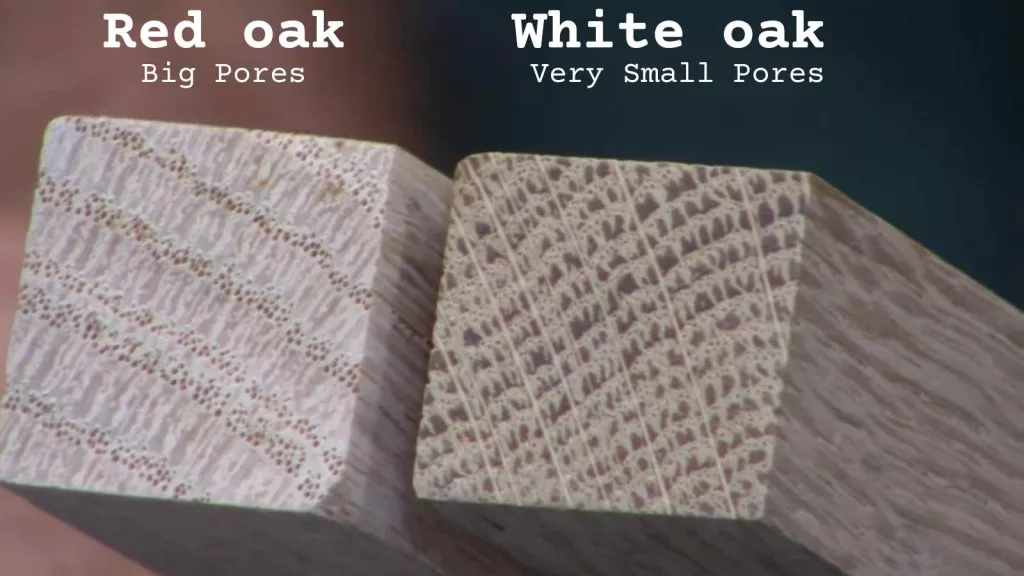
Texture and Feel
Red Oak: To the touch, it feels slightly rougher due to its open grains. This can add a rustic charm to furniture pieces, especially when left unstained.
White Oak: Smooth and solid, it offers a tactile experience that exudes quality. Its dense nature provides a smooth finish, often preferred for polished, high-end furniture.
Durability and Longevity
Beyond aesthetics, the longevity and resilience of furniture are paramount. Here’s how red oak and white oak measure up:
Resistance to Elements
Red Oak: While durable, the open grain makes it more susceptible to moisture. It’s best suited for indoor furniture or areas with minimal exposure to water.
White Oak: The closed grain structure of white oak gives it a natural resistance to water, making it a prime choice for outdoor furniture or pieces in humid environments. Its history in shipbuilding is a testament to its resilience.

Lifespan and Wear
Red Oak: With proper care, these furniture can last for decades. However, it might show signs of wear earlier, especially if exposed to heavy use or direct sunlight.
White Oak: Known for its longevity, these furniture can be passed down generations. Its dense nature makes it resistant to scratches and dents, ensuring it retains its beauty over time.
Practical Applications in Furniture
Oak, with its timeless appeal and robust nature, has been a staple in furniture design for centuries. However, the choice between red oak and white oak can influence the functionality, aesthetics, and cost of the furniture piece.
Suitable Furniture Types for Each Oak
Red Oak: Known for its warm tones and open grain, it is often the wood of choice for larger furniture pieces like dining tables, bed frames, and bookshelves. Its slightly rough texture lends a rustic charm, making it ideal for country-style or traditional interiors.
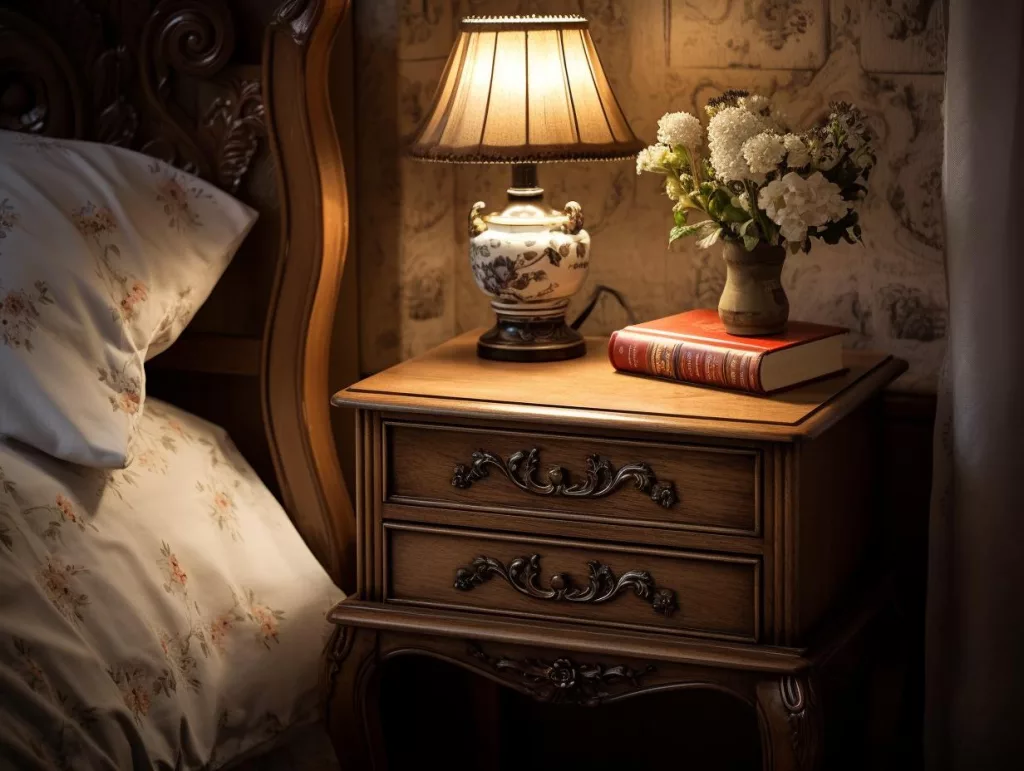
White Oak: The denser and smoother wood, with its water-resistant properties, is a favorite for outdoor furniture, kitchen cabinets, and bathroom vanities. Its refined grain pattern also makes it suitable for minimalist or contemporary designs, such as coffee tables or modular shelving.
Cost Implications
Red Oak: Generally, they tend to be more affordable due to their wider availability. This makes it a popular choice for homeowners looking for quality furniture without a hefty price tag.
White Oak: Being denser and more time-consuming to work with, this furniture often comes with a higher price point. However, its longevity and resistance to elements can offer better value in the long run.
Expert Opinion
I talked to a furniture designer, Mr. Adam Lorkin. He is an Irish and is very popular for his sophisticated taste for interior furniture designing. When making a choice between red oak and white oak, following advice may help you.

Furniture Designers’ Take
Me: Thanks for joining us. Can you quickly highlight the key differences between red oak and white oak in furniture design?
Mr. Lorkin: Of course. Red oak is warm and versatile, great for indoor furniture with its rich grain. White oak is durable and elegant, better for outdoor or high-use pieces due to its moisture resistance.
Me: How do you choose between them?
Mr. Lorkin: It depends on the piece’s use and location. Red oak for statement indoor pieces, white oak for durable, minimalist designs.
Me: Any advice for those deciding between the two?
Mr. Lorkin: Consider your lifestyle. White oak for active spaces or outdoors, red oak for a traditional, cozy feel indoors.
Me: Thank you for your insights.
Mr. Lorkin: Happy to help. Remember, the wood you choose should reflect the story you want to tell in your space.
Summary
Red Oak: Many designers appreciate it for its versatility. Its warm hues can be accentuated with stains, making it adaptable to various design themes.
White Oak: Designers often lean towards white oak for bespoke pieces or designs that require a touch of luxury. Its consistent grain and ability to take on finishes beautifully make it a favorite for high-end projects.
Care and Maintenance Tips
Red Oak:
- Regular dusting is essential to prevent particles from settling in the open grain structure.
- Utilize a soft, lint-free cloth for cleaning to protect the wood’s surface.
- Avoid the use of harsh chemicals that can strip the natural finish.
- Apply a suitable sealant to red oak furniture to enhance its durability.
- Keep these pieces out of direct sunlight to avoid fading and maintain the richness of the wood’s color.

White Oak:
- The tight grain reduces dirt accumulation, requiring less frequent dusting.
- Occasional polishing can help maintain the natural luster of white oak furniture.
- Promptly wiping spills takes advantage of its water-resistant properties.
- Applying a seasonal coat of protective oil is beneficial for outdoor white oak pieces to safeguard against weathering.
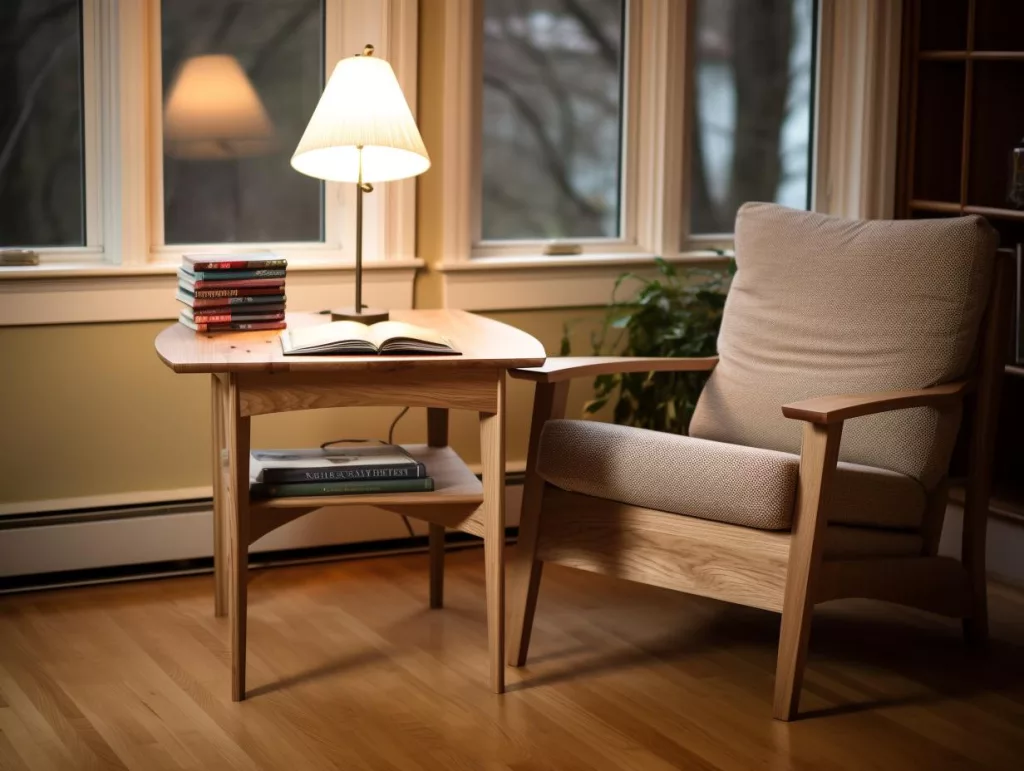
DIY Projects and Ideas
Red Oak: Its workability makes it a favorite among DIY enthusiasts. Consider crafting a custom bookcase or a rustic farmhouse table, which can be a rewarding project that also allows for personalization in terms of size, design, and finish.
White Oak: For those with more advanced skills, it is ideal for creating outdoor patio sets or intricate joinery projects like dovetailed drawers. Its strength and finish retention also make it suitable for crafting heirloom-quality toys or intricate decorative pieces.
Conclusion
Choosing between red oak and white oak for furniture comes down to personal preference and practicality. Red oak offers warmth and traditional appeal, ideal for cozy interior spaces. White oak, celebrated for its durability and subtle elegance, suits both modern designs and outdoor use. Consider your space, needs, and style to make an informed decision that will stand the test of time, ensuring your furniture not only looks beautiful but also lasts for years to come. This guidance is rooted in expert analysis, aiming to empower you with knowledge and confidence when you get confused in white oak vs red oak furniture.
Related Reads
- Differences between oaks
- Magical oaks for furniture
- Raw oak furniture
- White washed oak items
- Quarter sawn oak items
- Outdoor furniture made of white oak
FAQs
Is red oak or white oak better for furniture?
Both red oak and white oak are excellent choices for furniture, each with its own advantages. Red oak is known for its warmth and traditional appearance, making it ideal for indoor furniture. White oak, with its tighter grain and water-resistant properties, is often preferred for outdoor furniture and modern designs.
Is red oak good wood for furniture?
Yes, red oak is a good wood for furniture. It’s durable, has a beautiful grain pattern, and takes stains and finishes well, which makes it a popular choice for a variety of furniture styles.
Why is red oak better than white oak?
“Better” is subjective and depends on the application. Red oak may be preferred for its more pronounced grain and warmer tones, which can add a traditional and inviting feel to interiors. It’s also generally more cost-effective and easier to work with than white oak.
Can red oak be stained to look like white oak?
Yes, red oak can be stained to mimic the appearance of white oak. While the natural color and grain patterns are different, with the right stain and finishing techniques, red oak can be given a lighter, more neutral tone that resembles white oak. However, the distinctive grain patterns unique to each type of oak will still be present, so a perfect match isn’t possible. It’s important to note that the end result will often still retain some of the warmer tones inherent to red oak.

